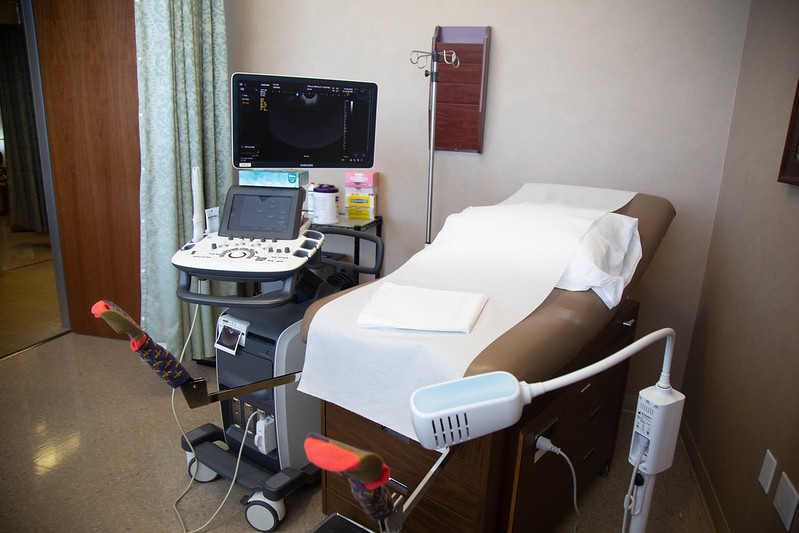After years of declines, Texas saw an uptick of births to teenage mothers in 2022 – one year after the state enacted its six-week abortion ban – according to a new report.
The analysis from the University of Houston’s Institute for Research on Women, Gender & Sexuality looked at Centers for Disease Control and Prevention data on Texas fertility rates for the years 2016-2022. It found that Texas’ overall fertility rates rose slightly, with the biggest increase among Hispanic women.
Elizabeth Gregory, director of the institute, joined the Texas Standard to dig deeper into the data.
This transcript has been edited lightly for clarity:
Texas Standard: First, tell us about the timeline of the data you’re looking at here. This doesn’t include data from the Texas abortion ban after the Dobbs Supreme Court decision that overturned Roe vs. Wade.
Elizabeth Gregory: Correct. This is 2022 birth data. And so that refers to births that occurred after the 2021 six-week ban.
What do you see as you look at the overall fertility trends? Before this six-week abortion ban that we’ve been talking about, you took it back to 2016, right?
Yes. And we’ve looked at prior years, as well. So, there’s been an ongoing decline in the birth rate in the United States since 2007, which was the beginning of the recession, and recessions are contraceptive.
But then it was augmented by the expansion of reliable birth control through what are called LARCs – long-acting reversible contraceptives or implants that are much less likely to be forgotten and more reliable that way. And also Plan B went over-the-counter.
So all those things have impacted people’s ability to plan their births in a big way. And that led to a 19% decline in that interval over the past 15 years in the overall U.S. birth rate, but most notably a 67% decline in teen births, which is enormous.
And that connects to a lot of change across the board in terms of what kinds of options teenagers have to complete their education and become skilled workers, educated workers, over the long term. It doesn’t mean they’ll necessarily have fewer children in their lifetime. It just means that they may delay until they finish their education. So that’s a big change.
» GET MORE NEWS FROM AROUND THE STATE: Sign up for Texas Standard’s weekly newsletters
I want to focus in on something I mentioned earlier – I talked about Texas having an uptick of births to teenage mothers in 2022. I was looking at the abstract of this report, and it mentions a slight increase, by 0.39%, which does seem rather small. What do you say to that?
It is very small. So it’s only notable in that it was the first uptick in the past 15 years and that the national rate continue to decline. But the other factor that came to light in doing this analysis, so that’s the teen birth rate. The overall birth rate in the state rose 2%, which also might seem fairly small. But what was interesting was to divide it out by ethnic and racial groups. And it turns out that there’s a big difference.
The overall rate for Hispanic women rose 5% after 15 years of steady decline, so that’s a notable change. Whereas the rate for non-Hispanic white women continued to fall – so it was down 2%. And similarly, non-Hispanic Black women’s rates continued to fall. So there’s a big differential in who was affected.
And the same thing happened in the teen rate. Hispanic teens saw a 1.2% raise where white teens saw a 5% decline. So what was interesting about this report was seeing these rises were having really differential effects across groups.
Why? I think that’s the question a lot of people are asking right now.
Yeah, that’s the question we get to discuss. What are the differences? The dynamic is one in which there has been this expanded access to contraception. So people in need of abortion, for whatever reason, presumably have not or in large part employed contraception or had access to contraception.
So, you’re seeing these differences between these two things that are happening simultaneously, which is expanded access over the past couple of decades to contraception in the group. So those who have access continue to see the benefit of being able to plan for themselves. But those who don’t have access now have lost access to the follow-up, which might have been abortion in many cases. That’s the difference that you’re seeing.
» MORE: In post-Roe Texas, pregnant teens have few options
Are we talking about access to resources which would allow you to obtain an abortion out of state?
It could. So further drilling down, when you look at the Hispanic women group by age, what we found was a 5% rise among Hispanic women. But that was almost entirely among women 25 and older, who would largely be people who already had children at home who might actually not have access to either the funds to travel or the childcare that they might need or be able to leave a job – those kinds of things.
So there are a lot of different factors to parse out and discuss.
How do you expect the Dobbs decision to affect these trends?
We know that it will be a larger rise in the 2023 data, because people are already looking at the birth certificates and seeing that rise, but what they have to calculate is the fertility rate differential. And the difference that the Dobbs intervention and the new law being national introduces is the fact that it’s not just a Texas situation. It also means the neighboring states also have bans.
And so if people are seeking to travel for abortion, they have to travel farther, and they may be less able to do that. And issues of access to contraception will continue to be issues, as clinics close and other kinds of factors affect people in Texas.














